Rod Miller's Blog, page 34
June 29, 2015
Happiness is Lubbock, Texas…

To paraphrase an old Mac Davis song, happiness is Lubbock, Texas, in my rearview mirror. We’re just back from a visit there for the annual Western Writers of America convention. Leaving Lubbock was a happy occasion because when we left town I took with me a WWA Spur Award for my novel Rawhide Robinson Rides the Range and a Spur Finalist Award for my poem “Song of the Stampede” from my book Goodnight Goes Riding and Other Poems. Beyond that, it was enjoyable just being there. There’s a lot of music in the air in Lubbock—besides Mac Davis, rock and roll pioneer Buddy Holly called the place home. Multi-talented Andy Wilkinson is from Lubbock, and he writes some of the best-ever songs and poems and plays about the American West and its people. He entertained WWA members with the able assistance of his Lubbock neighbor and saddle pal, singer-songwriter Andy Hedges. Finally, it’s always enjoyable to attend the WWA convention to renew old friendships and make new ones. There is little in life as agreeable as hanging around with folks who love the West and words and writing and appreciate the difficulty of getting an idea down just right—say, for instance, capturing a young man’s quest for adventure with a line like, “I thought happiness was Lubbock, Texas, in my rearview mirror.”
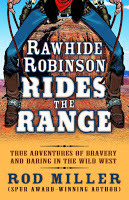
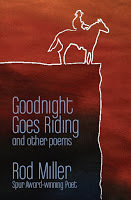
Published on June 29, 2015 18:36
June 20, 2015
Riding the Range with Rawhide Robinson.
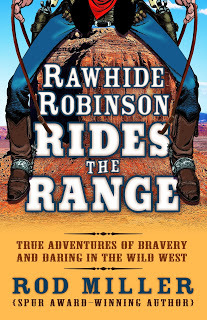
Soon we’ll be setting out for the Llano Estacado and an adventure with Rawhide Robinson. As announced earlier, the novel in which he stars, Rawhide Robinson Rides the Range, is the winner of this year’s Spur Award for Best Western Juvenile Novel from Western Writers of America. We’ll leave the Wasatch Front, cross paths with the trail Dominguez and Escalante blazed as well as the Old Spanish Trail, head east through the Colorado Rockies past Doc Holliday’s grave, travel south beyond Pikes Peak to connect with the Santa Fe Trail over Raton Pass, then southeast to the XIT Ranch and Dalhart, Texas, on to Amarillo and the Frying Pan Ranch, south past Charlie Goodnight’s Palo Duro Canyon, then on to Lubbock and the annual WWA convention.It’s a Wild West journey Rawhide Robinson himself would be proud of. But I doubt we’ll experience the kind of extraordinary adventures he did. You are invited—encouraged, even—to ride along with Rawhide Robinson as you read about his escapades in the award-winning novel, suitable for grown-ups and young adults alike. You can get it through online booksellers and it’s available through your local bookstore.
Published on June 20, 2015 05:13
June 13, 2015
Point and shoot.
I am not a photographer. But, in the course of magazine writing I am often expected to provide pictures to illustrate stories. So, most of what I shoot is journalistic or documentary-type stuff.But when something interesting in an artistic sense presents itself, I point and shoot and try to capture it. I look for odd angles and unusual arrangements, strange combinations and patterns of colors—things that look almost abstract or graphic in nature. None of the photos here are posed; all were taken on the fly. Only a couple of the images are cropped; the rest are full-frame just as the camera caught them.Take a look if you’ve got the time. But remember—I am not a photographer.
At the rodeo.The behind-the-scenes rodeo photos were taken at a high school and a college rodeo. Then there are a couple of shots representing success. Finally, a pair of detail pictures of Jeff Wolf’s monumental sculpture “Rodeo” that I think capture the art’s dynamic action.
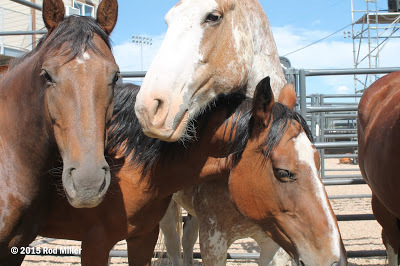
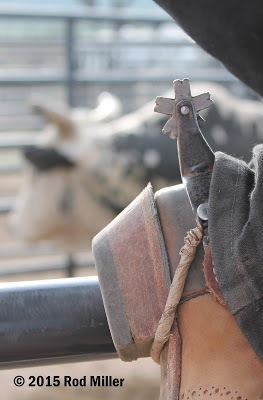
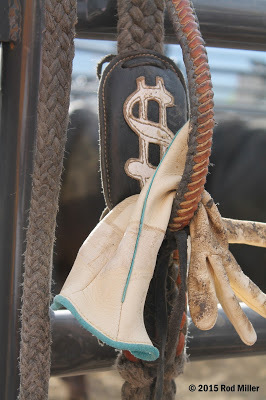
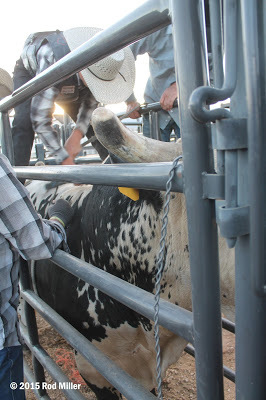
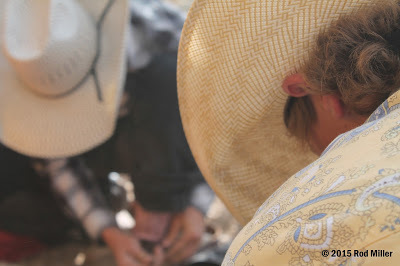
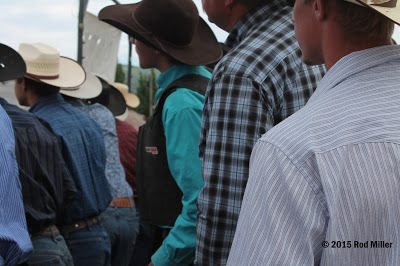
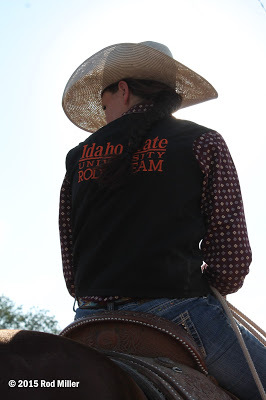
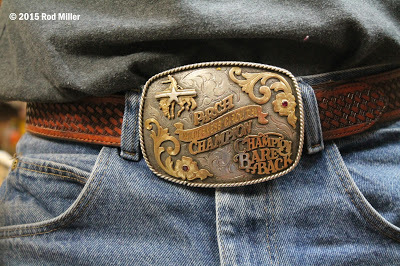
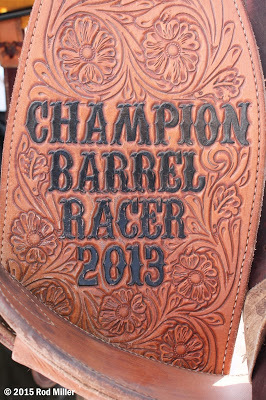
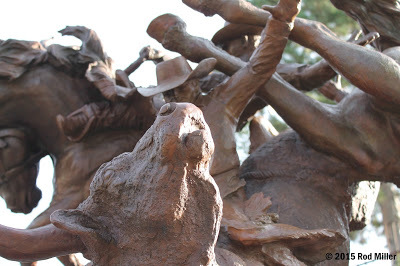
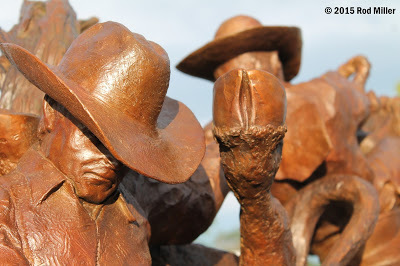
At the ranch.A skyline shot of gathering cattle off Midnight Creek starts this selection, followed by several pictures from a branding. The set ends where it started, with an Idaho ranch horse with a mecate and hackamore hanging from the saddle horn.
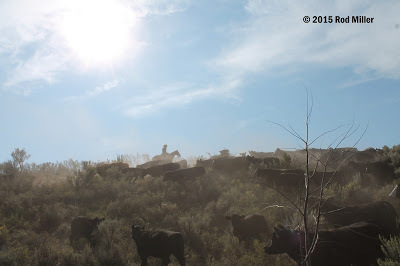
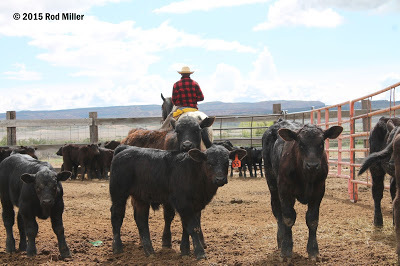
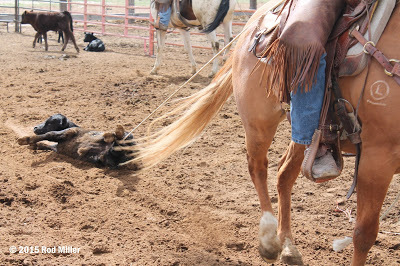
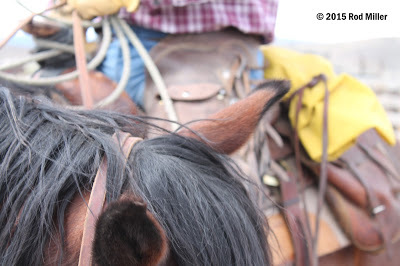
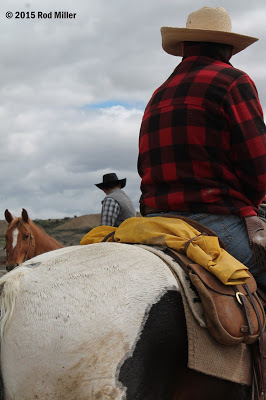
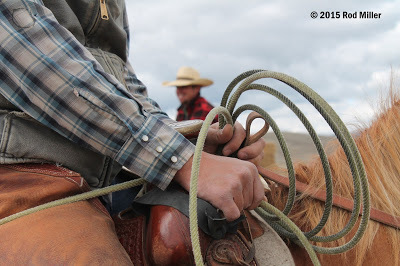
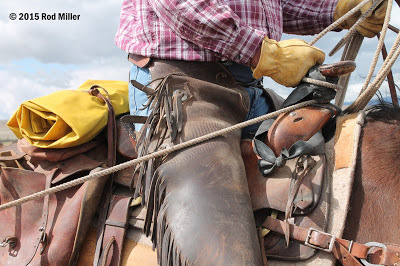
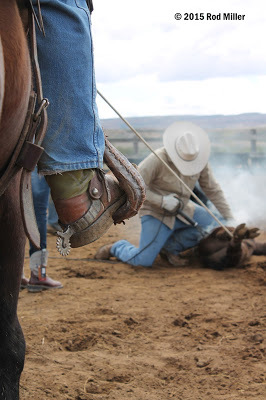
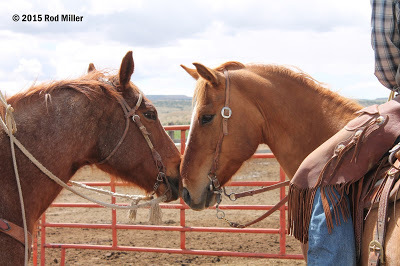
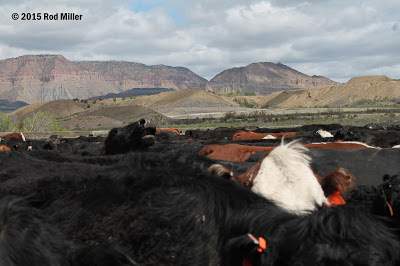
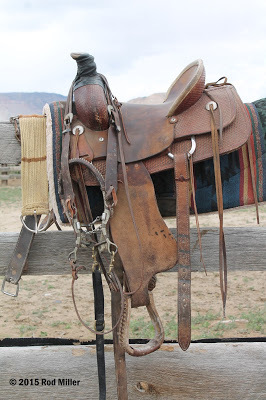
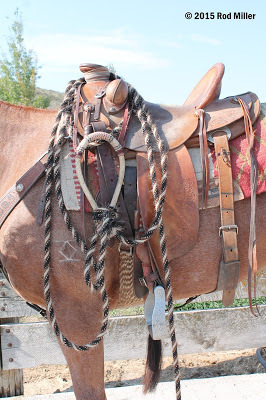
At work.Working with leather is a job, a craft, a skill, and an art. While doing stories on a couple of those artists I captured a few behind-the-scenes photos of some of the tools and materials the artists employ, ending with saddles for sale and an extreme close-up of a maker’s mark stamped into leather.
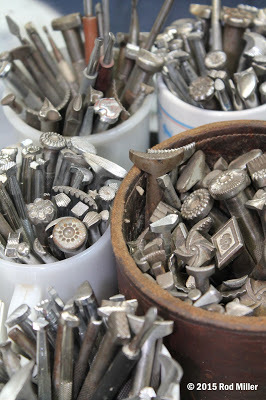
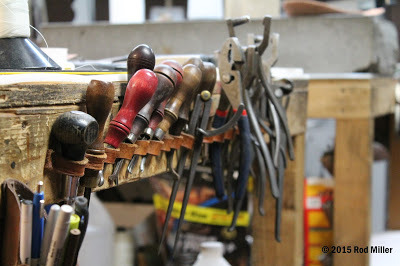
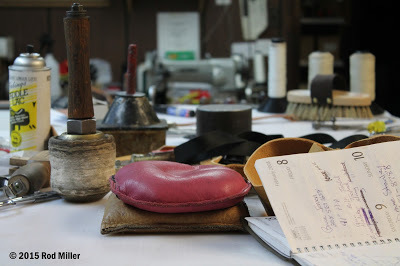
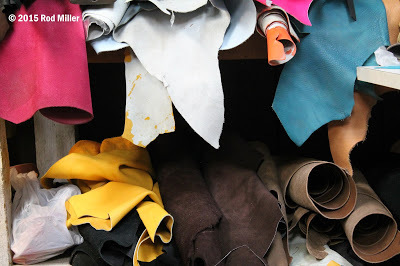
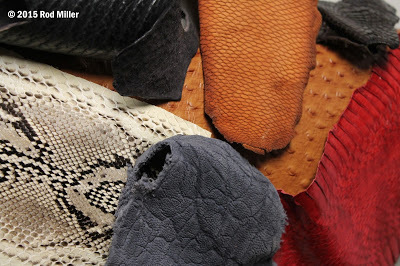
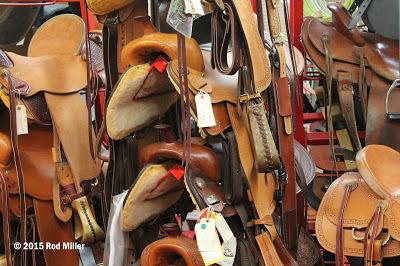
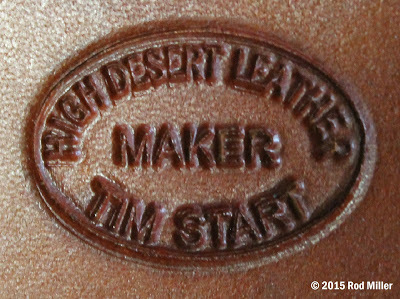
At play.Guitars can look as good as they sound. This lone photo comes from the practice pen of Mary Kaye and the Kaye Sisters as they blended bended strings and harmonized sweet voices.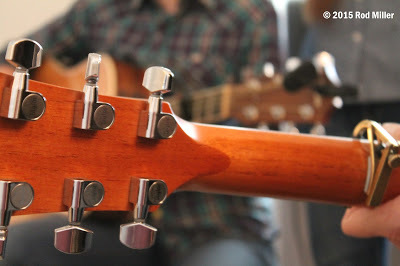
At the rodeo.The behind-the-scenes rodeo photos were taken at a high school and a college rodeo. Then there are a couple of shots representing success. Finally, a pair of detail pictures of Jeff Wolf’s monumental sculpture “Rodeo” that I think capture the art’s dynamic action.











At the ranch.A skyline shot of gathering cattle off Midnight Creek starts this selection, followed by several pictures from a branding. The set ends where it started, with an Idaho ranch horse with a mecate and hackamore hanging from the saddle horn.












At work.Working with leather is a job, a craft, a skill, and an art. While doing stories on a couple of those artists I captured a few behind-the-scenes photos of some of the tools and materials the artists employ, ending with saddles for sale and an extreme close-up of a maker’s mark stamped into leather.







At play.Guitars can look as good as they sound. This lone photo comes from the practice pen of Mary Kaye and the Kaye Sisters as they blended bended strings and harmonized sweet voices.

Published on June 13, 2015 05:25
June 5, 2015
A magazine article with a point. Lots of them.
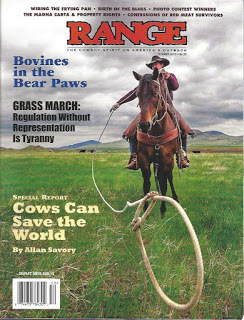
The most recent issue of RANGE magazine includes an article about the Frying Pan Ranch in the Texas Panhandle. The place is significant because it played an important role in making the American West what it is today. Joseph Glidden and his partner established the ranch back in 1881 for the sole purpose of demonstrating the usefulness of Glidden’s invention—barbwire—on a large scale. They built and strung 120 miles of fence to make the point. “Wiring the Frying Pan” in the summer issue of RANGE magazine is a reprint of a chapter from my new book, The Lost Frontier: Momentous Moments in the Old West You May Have Missed. The book is filled with unheralded historic events and people as interesting and important—but, perhaps, none so influential in the big picture—as the pointy, prickly devil’s rope that reinvented the West.Find out more about (and subscribe to) RANGE magazine at www.rangemagazine.com. Find the book online or at bookstores.
Published on June 05, 2015 13:11
May 29, 2015
Lies They Tell Writers, Part 15: Establish a Niche.

Like a low-rent lout, I say it “nitch.” Highfalutin folks pronounce it “neesh.”However you say it, if you’re a writer you’re supposed to find one, crawl inside, and close the lid. That’s how successful writers do it, they’ll tell you. Writers who sell lots of books establish a loyal following by giving readers what they expect. When they see your name on the cover of a new book, having read other books by you, they have a pretty good idea of what’s inside—it’s a shoot-’em-up Western novel, because that’s what you write. Or a romance novel. A mystery. Science fiction. A thriller. History. Scholarly biography. Or whatever your “niche” is.Establishing a niche leads to success for a writer, they say. And they’re probably right. No lie, this time, to my way of thinking. Because if there’s one subject I am well versed in, it’s how not to be a successful writer. There are, no doubt, myriad reasons for that. One of which is my lack of a niche. Everything I write is related to the West, but after that it’s all over the place. Novels that bear little resemblance to one another. Nonfiction on a variety of historic subjects. Poetry of the Western and cowboy type. Short stories in several styles. Because of all that, my name on the cover of a book doesn’t say much about what’s inside. So in the future, from now on, henceforth and forever, I am going to establish a niche and stop writing things that don’t fit. At least that’s the lie I keep telling myself.
Published on May 29, 2015 06:17
May 21, 2015
A night that will go down in history.
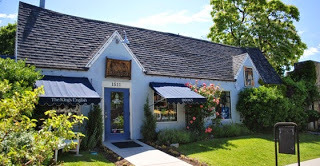
If you’re anywhere near Salt Lake City on May 28, mark your calendar for a historic evening at The King’s English Bookshop. They’ve invited me to show up at 7:00 to read from, talk about, and sign my new book, The Lost Frontier: Momentous Moments in the Old West You Might Have Missed. The King’s English Bookshop is located at the corner of 1500 East and 1500 South. There may well be a no-pressure, no-grade quiz on Western history, so bone up and be prepared. Be warned, however—the history we’ll talk about from The Lost Frontier won’t be the same stuff they taught you in school or that you read about in your average history book. See you at The King’s English Bookshop, May 28 at 7:00 p.m. Bring your friends and neighbors along.
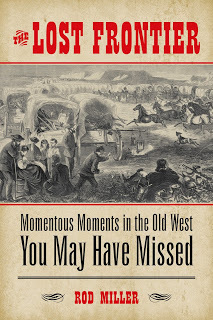
Published on May 21, 2015 10:46
May 17, 2015
Find The Lost Frontier.
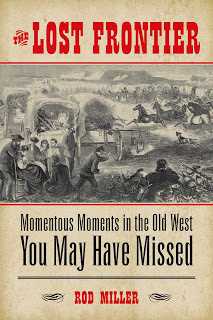
My new history book, The Lost Frontier: Momentous Moments in the Old West You May Have Missed, is now available. The Lost Frontier will be found at the usual online booksellers, and any bookstore can get you a copy if it’s not on the shelf. Some fine writers and historians enjoyed the book. Matt Mayo says, “No dry history here…the subjects are fully fleshed, clothed, and howling for attention.” Chris Enss says it’s “the way history should be written: riveting, involving, and filled with verified facts that make the era of the Old West come alive.” Will Bagley says, “I need to add biographer and historian to the long list of Rod’s astonishing talents.”I wouldn’t go so far as all that, but I do believe that in the pages of The Lost Frontier you’ll find plenty of interesting history—most of it strange and surprising stuff you didn’t learn about in school.
Published on May 17, 2015 16:39
May 8, 2015
Lies They Tell Writers, Part 14: Writing is Easy.
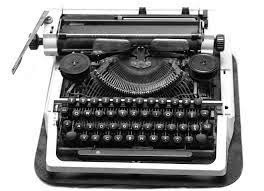
There’s an old saw that says “writing must be fun—if it was work, you’d get paid for it.” As true as that may be—and writing is fun for most of the folks I know who do it—writing well is, at the same time, work. But there are people I know who “write” but are not willing to work at it, or even acknowledge that work is required.For example(s):Once, while judging a poetry competition, another of the judges and I were discussing the relative merits of some of the submissions. This judge did not much take into account the use of literary technique, seem to appreciate its value, or want to reward the obvious effort of some of the poets to make their poems poetic. Subject matter and story were the only measures—“poetry” didn’t matter. To paraphrase, “I’m a big believer that this stuff comes from God, and all we do is write it down.”Well.While inspiration is important to writers, it is the Alpha, not the Omega. Once inspired, it is up to the writer to turn that inspiration into poetry (or prose, for that matter). Otherwise, we lay the blame for mediocre or downright bad writing where it does not belong—in the lap of the Almighty—and relieve the writer of the responsibility. It is our job as writers to take whatever inspiration we receive and mold and shape and polish it into something worthy of the muse.One more illustration:From time to time I am approached by writers and poets for advice. (Why they would stoop to my level is beyond my ken.) One poet wanted suggestions on that nasty little thing called meter. In my experience, there are a lot more poets who lay claim to using meter than there are poets who understand and use it properly. After a few go-rounds of discussion, that poet threw in the towel. "I really don’t want to get too technical if I can help it,” came the explanation, “because I think it might take the magic out of the process. Some of what I feel is my best poetry just seems to flow out almost complete.”Well.Like it or not, using meter properly in poetry is largely a technical process. It takes work and frustration and rewriting and revising and struggle and exertion to get it right. And, when well done, it will add to, not subtract from, the “magic.” Whether it is poetry or prose, fiction or nonfiction, writing well is work. As English novelist Anthony Powell said, “Writing is a combination of intangible creative fantasy and appallingly hard work.” Part of the work is understanding the gritty little details of why you’re writing what you’re writing the way you’re writing it. “Writing is very hard work and knowing what you’re doing the whole time,” historian Shelby Foote said. I agree. William Styron said, “Let’s face it, writing is hell.” He’s right, too—even though writing sometimes seems heavenly. Finally, Thomas Mann made a good point when he said, “A writer is someone for whom writing is more difficult than it is for other people.” That may be the difference, right there. Anyone can put words on paper, and many have a knack for putting them down well. But writers—real writers—are the ones who invite, and endure, and even enjoy, the difficulty involved in writing right.
Published on May 08, 2015 06:15
May 1, 2015
Cache Valley, here we come.
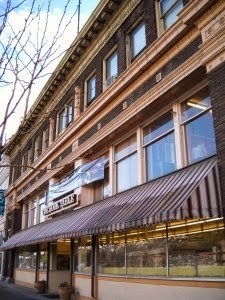
Logan, Utah, has held a special place in my heart ever since my years living and working there way back when I attended Utah State University. It is always a pleasure to revisit all the memories of Rounder Houses, rodeo teams, radio stations, and other memories that have lasted a lifetime—including some best forgotten. I’ll be back in Logan May 9. The Book Table, at 29 South Main Street, is hosting a book signing from 2:00 to 6:00 that afternoon and I’ve been invited. The Sassafras Folk String Band will bend the wires on banjos, guitars, and other instruments to keep things lively. I’ve been asked to share a few poems. And I’ll be signing books along with Cache Valley authors Janet Jensen, JoLynne Lyon, and Carole Thayne Warburton.I’ll have copies of several of my books, along with the brand-new, hot-off-the-press The Lost Frontier: Momentous Moments in the Old West You May Have Missed.If you’re anywhere near northern Utah on May 9, come to the party.
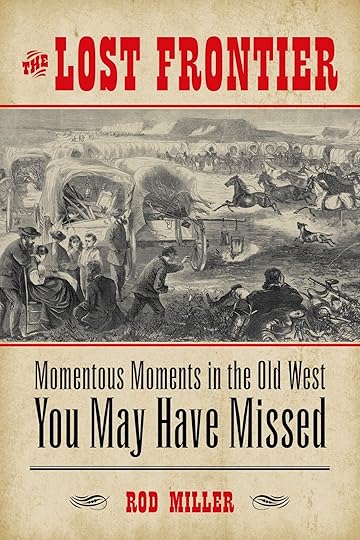
Published on May 01, 2015 07:15
April 22, 2015
Cowboy Poetry at College, Second Go-Round?

The folks at the University of Utah Division of Continuing Education and Lifelong Learning have scheduled “Introduction to Cowboy Poetry” for Summer Semester. Having been cancelled during Spring Semester for lack of enrollment, the course is on life support and may expire if it doesn’t thrive this time around.For six Tuesday evenings starting May 12, the course will meet for laughs and learning at the Annex Building on the University of Utah’s main campus on Salt Lake City’s east bench. No grades. No credit. No pressure. Just useful information and good fun. We’ll study the works of master cowboy poets, living and dead, try our hands at composing a poem or two, and talk about recitation and presentation techniques. We’ll even address songwriting as it relates to poetry if the stars align properly, courtesy of Brenn Hill. If you’re interested, or know someone who might be, information about enrollment is available at the University of Utah’s Lifelong Learning website. Don’t put it off. If you do, it may be too late. For all of us. Here’s a link: https://continue.utah.edu/lifelong/class/llwrc_831_introduction_to_cowboy_poetry
Published on April 22, 2015 14:21



